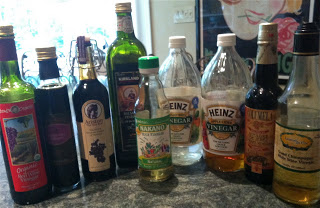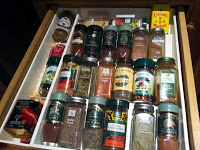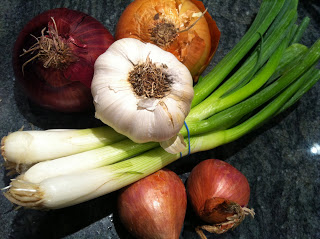Do you think you have what it takes? Your kitchen is equipped with a good assortment of pots and pans, small appliances and kitchen tools. Hopefully, you’ve collected a few of my recipes, as well as those of some more storied chefs, and you’re ready and eager to fire up your stove. But, aside from the main ingredients called for in those dishes you’re hankering to cook, you need to make sure you’ve got the right stuff–a pantry that’s well stocked with the essentials. Here’s my guide to the ingredients that I think are key to most culinary efforts.
Oil & Vinegar
A mainstay in my kitchen is olive oil. I would say that I use it in about 75% of my cooking. There are so many brands, from all over the world, it can be overwhelming! When I worked at Williams Sonoma, I was privy to a fantastic variety of high-end oils–we even had an oil tasting bar set up in the store. But, like so many other things, it all comes down to personal taste. Whether Italian, French, Spanish or Californian, olive oils can have a broad range of flavor, from buttery to peppery to grassy. The best way to find what you like is to taste as many as you can.

For general cooking, I mostly use an inexpensive oil, like extra virgin Felippo Berio. I prefer a better quality oil, one that’s from the first cold pressing, like Colavita, for dressing and drizzling. I also like to try new brands from time to time, like this Olave, which is Chilean and pressed from Arbequina olives. Olive oil has a low burning temperature, so when my cooking requires higher heat, I usually go to canola oil, or grapeseed oil if I want something more delicate in flavor.

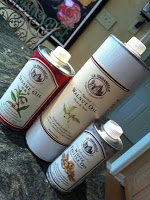
While we’re on the subject of fats, I just want to put my two cents in about butter. Always, always use unsalted butter in your cooking and baking. It has a purer flavor and you’ll have a much better handle on your salt content. I’m liking Whole Foods’ 365 brand butter these days, and also Keller’s brand when I can find it. For a finer, full-fat, “finishing” butter, I really love Kerrygold, a brand from Ireland, for its fresh from the farm flavor (how’s that for alliteration?!).

Vinegars range in flavor and intensity. Everyone is familiar with red wine vinegar and white wine vinegar (I prefer the champagne variety). Balsamic vinegar has exploded in popularity over the last few years. I use inexpensive balsamic from Costco to make a syrup reduction that pours over roasted asparagus or sliced strawberries with cracked black pepper. I also keep finer aged balsamic on hand for dressings. Basic white vinegar and apple cider vinegar are good to keep in your cupboard as well. Rice vinegar is nice and mild and low in acidity; aged sherry vinegar is one of my all time favs for more refined salad dressings or a final splash on cooked veggies.
Sugar and Spice and Everything Nice
Okay, here’s something I call for in almost every recipe: “kosher salt and freshly ground black pepper.” Annoying, isn’t it? But there’s a very good reason I insist on these two things. You see, there really is a difference between salts. If you did a taste test, you would find that sea salt is saltier than table salt, table salt is saltier than kosher salt. Kosher salt is, therefore, the chef’s choice–not only because you have more control over the flavor, but also because the large grains make it easier to measure out a pinch. Of course, no chef worth her wait would stop there: there are so many amazing varieties of salt to experiment with. I’m quite partial to these French sea salts and “fleur de sel” (flower of salt), which make the perfect finishing sprinkle. But my absolute favorite is Maldon from England, which is a sea salt flake–a salty sensation that adds amazing taste and texture to grilled steaks and sliced tomatoes. There’s nothing like freshly cracked black pepper–I prefer Tellicherry peppercorns. Pepper that’s already ground (like other spices) has lost its zing–use freshly ground whenever you cook for the best flavor. Another benefit to grindingit yourself is that you can control the size of the grind–be it fine or coarse.
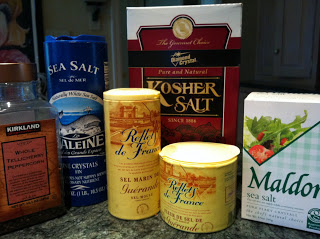
I don’t use a lot of sugar in my cooking (baking is another story) but when I do, it’s usually just good old granulated. When roasting squash, I’ll sprinkle on light brown sugar or raw sugar for more full-bodied flavor. Honey is wonderful for rounding out the flavor of salad dressings and sauces.
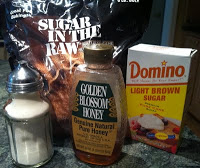
Though it probably doesn’t look that way, I like to keep my spices to a minimum, especially the dried herbs. For some types of cooking–Asian, Indian, Moroccan–they’re very necessary. But the tendency is to keep them around for a long time and that ain’t good. They dry up and lose their flavor within a few months, so make sure to keep refreshing them. Some that I find invaluable: dried thyme and oregano for tomato sauces (crumble them in your hand before using to reignite their flavor); saffron, ginger, cinnamon and cumin for tagines; cayenne, chile flakes, and chili powder for tex-mex; bay leaves and Hungarian sweet paprika for roasts and soups. It’s a good idea to heat these spices up in a warm skillet before using to reawaken their essential oils.
This list would not be complete without mentioning my new love: smoked paprika or pimenton, mild or hot. It adds such wonderful smokiness and intensity to everything it touches.
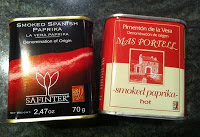
Condiments
Often a flavor base for sauces and dressings, condiments can be the unsung heroes of many recipes. Ketchup and mayo are obvious basics. Anchovies, whether whole or in paste, add depth to my Caesar salad dressing and great pasta sauces. Dijon mustard makes emulsifications a snap. Maille brand mustard has a characteristic French bite, while Grey Poupon is milder in taste. The tamarind concentrate in Worcestershire sauce lends a distinct flavor to Bloody Marys and cocktail sauce. Love Italian tomato paste in a tube–it’s easy to use a little or a lot without any waste. When it comes to hot sauce, I prefer Frank’s Red Hot for tangy buffalo wings, Cholula brand (great on tacos!), and Sriracha hot chili sauce, which adds its own unique heat.

For breading, I sometimes use plain 4C bread crumbs (why buy seasoned when you can freshly season it yourself?), but I mostly prefer Japanese panko, which adds a lot more crunch. Wondra, which is a low protein granulated flour, is more tender than regular flour, so it’s great for coating, and perfectly thickens gravies without lumps. Corn meal has a distinctive crunch and is great for breading catfish.
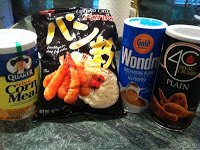
Grains and starches are opening up all new horizons for me these days–no longer do I feel constrained by the same old pasta or potatoes. I’ve been discovering the wonders of quinoa, couscous and farro, and marveling at their versatility. Have to admit I’ve never been a big fan of rice, but still try new varieties all the time–sushi rice wins my favor mostly because of its lush texture.

Onions, Garlic & Fresh Herbs
And, finally, one of the most important components in cooking. I can not think of many dishes that I prepare on a regular basis, that don’t include some form of onion, whether it be fresh garlic, onion, shallot or scallion. They add a measure of savoriness that grounds each dish and creates an all important flavor base.
To me, cooking without herbs is like a day without sunshine. Woody herbs, like rosemary and thyme, lend their distinct character to dishes while braising or roasting; more delicate, leafy herbs, like parsley, dill, cilantro, chives, and mint, taste best and brightest when added at the end of cooking.
So, how well-stocked are you? I hope this guide informs you and helps you feel prepared to cook up a storm!


